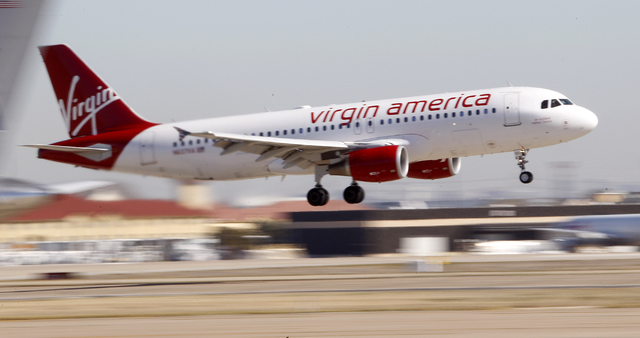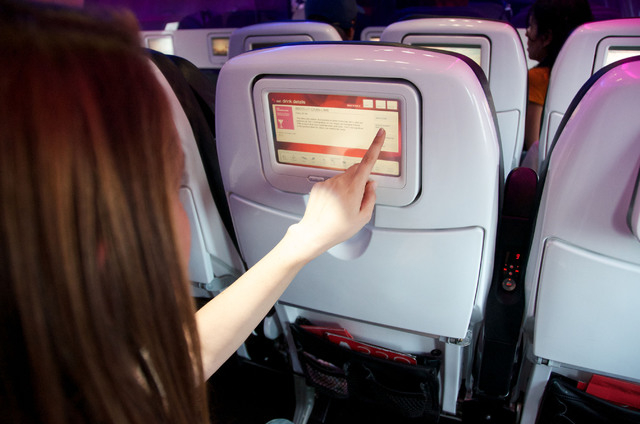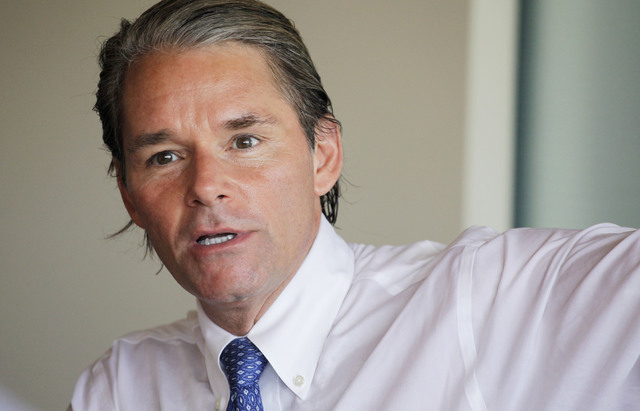Why airlines aren’t nice
NEW YORK — Passengers cherish Virgin America for its mood lighting, live TV, fancy cocktails and friendly flight attendants. That nice-guy approach to air travel wins awards and attracts a cult following, but may not fly with Wall Street.
For all the accolades, Virgin America has lost $400 million since its founding in 2007.
As Virgin America weighs a public offering there are warning signs for potential investors. Its brand-new aircraft come with a hefty debt load and the airline has failed to attract big-spending business travelers. To increase revenue — and satisfy shareholders — the airline might eventually be forced to take actions, such as raising fees, which risk alienating passengers.
After all, the darlings of Wall Street are Spirit Airlines and Allegiant Air — two of the most unpleasant airlines to fly. Their seats don’t recline and legroom seems nonexistent. Using overhead bins costs extra. But their profit margins, north of 10 percent, are the best in the business.
Meanwhile, there is JetBlue Airways. Once a customer favorite, it’s now — amid lagging profits — facing relentless market pressure to add bag fees and cram more passengers onto planes.
Style, not profits, has been the focus for Virgin America. The company declined to comment for this story, but in 2011 CEO David Cush told The Associated Press that his airline hopes to “make a few hours out of people’s day a little bit nicer, more pleasant.”
Loyal passengers say Virgin America makes flying enjoyable. But that hasn’t translated into a financial windfall because the airline fails to collect the higher fares — or fill as many seats — as other airlines.
For every 1,000 miles Virgin America flew in the first half of this year, it collected an average of $106 for each available seat. By that same measure, Southwest Airlines took in $135; Delta Air Lines reaped $166 on its domestic routes.
“They’re producing a product that people do really like but aren’t willing to pay enough for,” says Seth Kaplan, managing partner of industry newsletter Airline Weekly.
Most Virgin America flights start in either San Francisco or Los Angeles, including highly-competitive transcontinental routes to New York. Those routes are loaded with business travelers who tend to buy expensive, last-minute tickets. They just aren’t flocking to Virgin America.
Those customers want frequent flights so if a meeting ends early or runs late they can adjust their plans. They also want a worldwide network so the same airline that takes them from San Francisco to Chicago can also take them to Tokyo or Cleveland. Virgin America flies to just 21 cities in the U.S. and Mexico — some routes only have one daily flight. Finally, there’s no chance at a free upgrade to first class.
That’s the crux of the problem.
“They don’t offer the convenience of larger carriers such as Southwest or the global reach of airlines like Delta or United,” says Henry Harteveldt, of travel advisory firm Atmosphere Research Group.
Virgin America’s first flights, in August 2007, came at the onset of the Great Recession. Fuel prices spiked just as Americans stopped flying. Low introductory fares helped fill jets but didn’t pay the bills. Virgin America lost $395 million in its first four years flying.
Executives froze expansion plans and finances improved. Last year brought the first annual profit: $10.1 million. In this year’s first half, the airline lost $9.4 million, a fraction of past deficits.
A public offering will help pay off some of Virgin America’s $654.4 million debt — some of which carries a 17-percent interest rate. The airline also has to spend $470.4 million in the next two years on new planes. Canceling orders isn’t an option — it could lose $69.1 million in deposits with Airbus. Lastly, its initial investors, including Sir Richard Branson’s Virgin Group and New York hedge fund Cyrus Capital, have waited a decade to get their cash back.
Virgin America would be going public at a time of record airline profits. But Wall Street isn’t happy with everyone.
Analysts are pressing Southwest and JetBlue to make changes favoring investors over customers, such as charging for a first checked bag, reducing legroom and increasing reservation change fees. The financial benefits would “significantly outweigh the potential customer backlash,” Cowen Securities analyst Helane Becker wrote in a note to JetBlue investors.
Similarly, Wolfe Research analyst Hunter Keay gleefully reported that JetBlue executives used the phrase “customer service” just once in its second-quarter earnings call, down from 10 times in the first quarter.
Southwest has managed to resist, in part, because it’s consistently profitable. But JetBlue — with just a 3-percent profit margin — appears ready to capitulate, declaring recently that bag fees are “on the table.”
Virgin America’s poor finances don’t give it any wiggle room.
“You can be McDonald’s, or you can be a fancy steakhouse,” says Kaplan of Airline Weekly. “But if you’re going to be a fancy steakhouse, you better not be charging McDonald’s prices.”

























